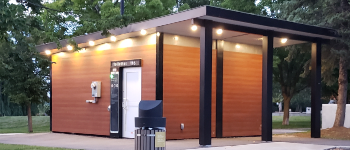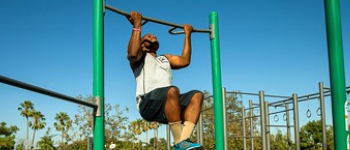What to Include in Your Neighborhood and Community Parks
Apr 27







Jul 05
Parks and playgrounds provide a breadth of enriching experiences for kids and families. There are so many benefits to your local parks and playgrounds! But what are the differences between the two? Playgrounds typically are defined by a specific area of play featuring play equipment, while parks or complexes often feature a playground and sports fields, walking trails, and more amenities. Read on to learn more about parks and playgrounds and their differences.
A park is defined as a public, green recreation area. Parks often include playgrounds but can also be encompassed by forests and walking trails, athletic fields, bathrooms, gazebos and shelters, public gardens, and more! Parks are often used for the protection of wildlife and natural habitats in addition to being set aside for human enjoyment.
A playground is defined as an outdoor area provided for children to play in. It can feature several different kinds of play equipment, like swings, a ramped structure, sensory panels, musical instruments, even modern options like technology-infused play arches and activity zones. Some playgrounds have amenities like benches and trash receptacles. Read on to learn how playgrounds compare to parks.
There are several main differences between a park and a playground. In this blog we’ll look at the major differences between these five key elements: Amenities, safety, size, location, and cost.
Parks and playgrounds feature different amenities and equipment. Parks often have several amenities that playgrounds do not have, but designs vary and sometimes playgrounds do feature additional amenities like benches, tables, receptacles, and outdoor athletic equipment in addition to traditional playground equipment. The aforementioned elements are common in most parks today. Larger parks and revolutionary inclusive complexes include several other amenities, like accessible bathrooms, walking trails, athletic fields, shade structures and trellises, snack shacks, and more.
Playgrounds and parks have different safety concerns. Playgrounds often provide a more contained environment; Some larger complexes even provide a private experience through membership programs. Playgrounds also feature safety surfacing that meets certain head impact and fall height criteria, whereas parks are usually largely natural grass. Parks are usually public and are larger environments, which may be a safety concern. Parks are great for older kids, while most playgrounds are best suited for kids 12 and under.
Parks are larger, often including playgrounds within them as a feature. Playgrounds, being smaller, are often enclosed. Location and design choices are a huge factor in the size of a playground, while parks can span for miles due to the incorporation of the natural environment and very often forests. Parks are usually located in the heart of a city or town and are easily accessible. Playgrounds are frequently found scattered throughout a town and may be spread out into rural areas.
We have discussed throughout the blog the differences in size and varying amenities of parks and playgrounds. Parks, being larger and having many more features, are often more expensive to complete than playgrounds. That being said, playground designs vary widely and have a large range of prices.
Parks and playgrounds both play an essential role in communities, helping to get kids and families outside. Understanding the difference between the two can help you determine the best fit for your space. If you need any additional help figuring out which is right for you, or getting started with any park or playground design or equipment, reach out! The experts at MRC have experience in both and are here to help.